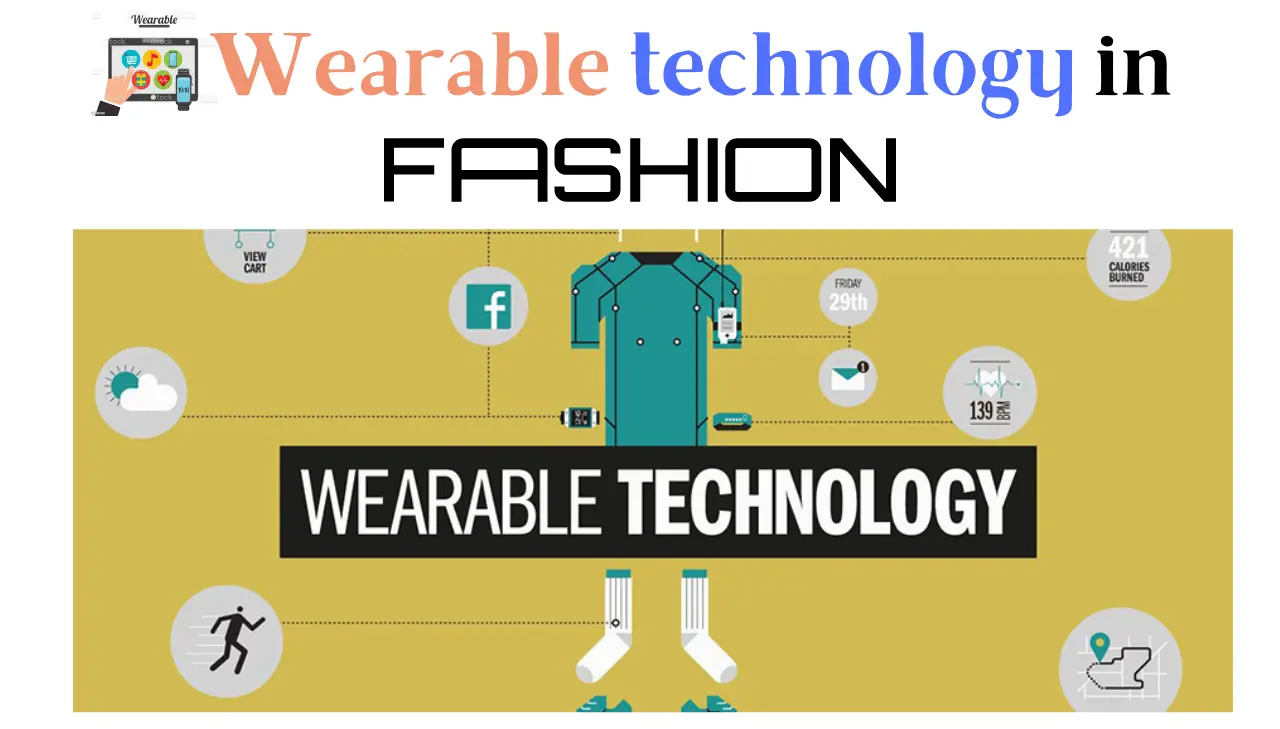Do you know The Benefits of Wearable Technology in Fashion Industry today? If you do not know about it, then there is no problem, in today’s article we will tell you what are The Benefits of Wearable Technology in Fashion Industry? Lets Begin with Some Points- The norms currently governing the fashion business are changing due to technology. Functionality is now just as important as appearance. Our clothes are becoming more digital-based, reflecting our technologically interconnected lives. With the latest developments, we can interact with designs like never before, and they can even react to the external environment.
Benefits of Wearable Technology in Fashion Industry
Wearable Innovation awards apparel and footwear companies that recognize advances in technology and customization. Wearable technology in fashion are often referred to as components or even mandatory components.
When we think of wearable technologies, smart clothing and e-textiles, we often think of their uses in health and wellness. As the fashion industry slows to a “smart revolution”, wearable fashion technology moves away from techniques towards advancements that provide real value to the wearer.
The Wearables Market Segments When looking at today’s wearables market, four main segments have emerged since its inception:
Sport and health
Wearable or wrist-based devices that collect activity data such as steps taken, calories burned, steps taken, distance traveled, and rest time. The image shows various fitness and fitness devices including Fitbit Flex, Jawbone UP, Misfit Shine and Nike+ FuelBand.
Clinical and health indicators
Wearable technology fashion designers eg fingers, wrists and fingers that monitor body conditions including heart rate, respiration, EKG, temperature, blood pressure, dehydration, glucose levels and even body condition.
Lumo Back, Zephyr’s Bioharness and Noob’s snECG are just a few examples of this amazing niche.
Smartwatches
These are typically watches that work with smartphones (shared via Bluetooth). Smartwatches offer some of the best features of today’s smartphone design, as well as associated features and functionality.
Connected mirrors
A quarter of the market, as the name suggests, is glass products that provide a viewing area for the anticipated computer screen. Smart glasses represent hands-free connectivity for tasks like real-time data browsing, photography, hunting, and that’s just the tip of the iceberg.
Similarly, smart glasses can provide an augmented reality (AR) experience by interacting with existing reality.
Wearable Technology
- A New Look to Fashion
The apparel industry’s interest in using wearable technology is new in itself. Art evolves quickly. Sometimes the furniture just arrived. Here’s how Wearable technology in fashion is disrupting trend.
- Characteristics of technical support:
Smart jewelry, such as bracelets, smart watches, smart key chains, smart bracelets, bracelets, belts, belts, rings, bracelets, fashion accessories, bracelets, bracelets and more.
They are beautiful and available in all metals, from gemstones to semi-precious stones to incredible fakes. Apart from adding style, they also offer various functions like syncing phones, taking selfies, tracking various exercises like sniffing, and many of these devices have a built-in charger.
- The chameleon effect:
The researchers say that the color of the turtle changes with altitude and season. Often, because lawns are not the only problem, smart buildings are often used to provide users with comfort and shade or to change the climate in which they are used.
Fabrics made from soft materials such as microfiber have also become commonplace. Some fabrics also have sensors that work with biometrics and temperature changes.
So now, other wearable partners are adopting RFID innovations that allow users to find and recover lost devices. Smart clothing combines style, functionality and value.
- Handbags:
Stylish bags based on creative storage, with interesting features such as an interior light that automatically turns on when the bag is opened. There are battery-powered LED lights that illuminate the contents of bags and bags.
Wearable technology in fashion industry connect customers to their devices and allow them to make hands-free calls, listen to music, click photos, call locally, record audio and more. They can also help you charge smartphones and other USB devices.
Brands Using Wearable Technology
Levi’s and Google project jacquard:
Google Trucker Jacket The Levi’s Passenger x Jacquard jacket is the new clothing for urban bikers. A touch strap left button allows users to tap, tap, or hold to access basic functions such as changing music, recording or receiving calls, or sending mobile notifications.
The Unseen for Selfridges
Unseen from London was one of many pieces commissioned to promote the short film. Founded by DIY entrepreneur Lauren Bower, the startup is a foolproof startup that changes the tone depending on the client’s interaction or context.
At the end of 2015, the Selfridges aesthetic consisted of bags, scarves, phone cases and the sky was the limit from there when it came to things like gas pressure, ambient temperature, habitability, ventilation and sunlight.
For example, the color of Italian breeding frogs changes from bright red in spring to brown in late summer and from dull brown to green in cooler autumn.
Read More : Tech for Tots: Unveiling the Surprising Effects of Wearable Technology on Children’s Health
Wearable Experiments
Wearable Experiments creator Billy Whitehouse released a song titled Fan Jersey ahead of this year’s Super Bowl; Fans can wear t-shirts to watch the biggest game in American soccer.
Sensory vibrations added via Bluetooth activate the game and create an emotional connection with the user. Wearable technology in fashion industry also developed a version of European football.
Conclusion
Many people might have question How has wearable technology changed the fashion industry? Here is the answer. Wearables have long been considered objects of design innovation. The once cumbersome watch and smartphone industry is gradually becoming a purely functional industry.
Hello, my name is Rishabh Kumar and I am the author of TheTechGlance.com. I am fond of writing and I have done engineering from NIT Hamirpur due to which I have good knowledge of technology, AI, Crypto and network.
